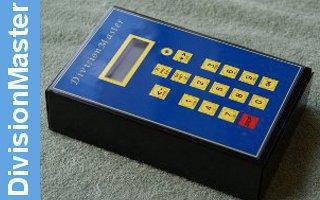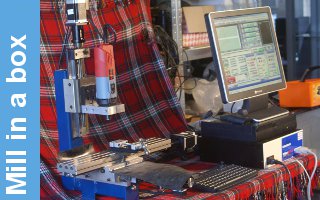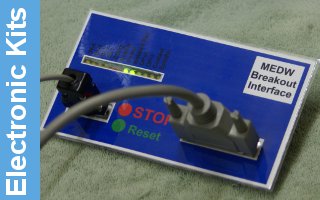HRP Wheel Building
Traction engine wheel building is probably one of the less popular operations, this is straightforward if carried out with a well made jig. The jig can be made in various forms, all of which are undoubtedly satisfactory, provided they achieve the object of locating the hub central and square with the rim and are of the correct relative height. In the original engines the wheel spokes were cast into the iron hubs, and these spokes were then rivetted to the T' rings; we have to achieve the equivalent of the original and therefore it is usual to face the outer surfaces of the hubs, and then to machine slots into these hubs, to correctly receive the spokes. Undoubtedly spokes used to represent one of the most tedious and lengthy processes in wheel building, and they were usually made by milling them in batches, or hacksawing and filing. The milling process was not always as quick as it might appear to be, since due to their small width, batches of T.E. spokes are apt to move if any attempt at heavy cuts be made.
Generally speaking it is best when making spokes to take strip metal, about three quarters of an inch over finished length, clamp together and then either drill or bolt together or weld the end edges so that they are locked as one unit during the milling operation. Fortunately today some model suppliers are able to offer accurately pressed out steel spokes, and save the builder this tedious process.
A simple wheel building jig may be made by taking a piece of sheet steel, fitting a suitable spigot to take the hub, and brackets to carry adjustable bolts which locate the rim. An adjustable jig is a good idea, since most model traction engine wheels are built with cast aluminium rims and slight variations can then easily be taken care of. The drawing (No. 15) will make this form of jig very easily understood. A word here on aluminium rims:-These were introduced to save the modeller the need to machine the rims, which generally would have been beyond the capacity of his lathe.
They will generally be clean cast, needing little filing up and will be more than amply strong for the strain they will need to take, having the added advantage that they will be permanent (i.e.: will not rust), most manufacturers produce these from an alloy containing silicone which has a high resistance to oxidisation. Steel rims are undoubtedly the finest that can be used, if made to a high standard, e.g.: rolling up T' iron of an oversize section and then machining all over, or sometimes fabricating. However, many fabrications seem to end up distorted, or with a poor finish at the joints, and with no proper constant radius. Therefore, generally speaking, fabrications for wheel rims are not to be recommended.
After machining the hubs completely and preparing the rims, building can commence. We will take the front wheels first, since these are the more straightforward, having only one T' ring.
Mark out and centre-pop and carefully drill one spoke for its rivets; after checking and being quite certain that these holes are in the right position, use this spoke as a drilling jig. Clamp one spoke at a time against it, using two clamps and drilling through the existing holes, being sure to keep the spokes flat during this operation. Locate the hub and the rim in the jig (made as previously described or turned from a suitable piece of hardwood). Then take the spoke pressings and bend these sharply at the point at which they leave the rim web, and also where they meet the hub, the bend should not be gradual since traction engine wheels were intended in general to be quite rigid. Some of the very early engines were turned out with spokes formed into a gentle curve/and made of spring steel, in an attempt to achieve some form of springing. This however, was not terribly effective, and later on in the evolution of traction engines the wheels were made completely rigid and the axles themselves were sprung, which was much more convenient to achieve. Make sure to fit the spokes on the correct side of the web of the wheel, correct to the particular prototype you are modelling. Engine builders, especially Burrells, fitted front spokes on one side only of each of their front wheel webs, and also on alternate sides both on early and late engines.
These spokes should be carefully bent or formed until they will lay flat on the webs of the rim and seat down nicely in the slot of the hub; of course, it will have been necessary to cut the surplus length from the spoke to achieve this. The radius at the palm of the spokes should blend with the top edge of the web of the wheel rims. Having formed all the spokes on the first side completely until they all lie down flat; with the palm end clamped to the web, drill through the holes in the spokes and through the web, fitting one bolt in the centre hole to keep the spoke in place. Quickly check with the calipers that these spokes are all equally spaced (they should be, if your hub was milled correctly); then clamping one at a time, drill through and fit with one bolt each.
When all the spokes are secured, use a suitable washer under the clamping nut (which will just cover the ends of the spokes), and clamp them down. Now drill, counter drill, counter-sink and tap at the spoke ends, so as to eventually secure them to the hubs; removing one spoke at a time, de-burr to ensure that they will lay flat; then, making sure that the spoke and the slot are quite clean, coat the underside of the spoke and groove with Araldite adhesive and then re-fit the spoke, pulling right down into position with a countersunk screw at the hub and the single bolt at the rim. Carry out this procedure with all the spokes and then it will be possible to take the wheel from the jig. Rivetting of the spokes may now be carried out. The finest way of doing this is with the aid of a fly-press, and if one has access to a press it is certainly a sound policy to use it, since in this way the rivet ends can be accurately formed-over in seconds, exactly in line, and of constant shape. But, working by hand, although accurate results can be achieved, it is a lengthy process, and it is always desirable to have a second person to assist. If you can get access to a press, it is a fairly straightforward matter to make the necessary tools. Turn up a punch blank for the top tool, and roughly drill or turn the half circular impression. Then make this punch red hot and drive it down on to a ball bearing of a suitable size, with a medium size hammer, this will make a perfect impression for the punch, after which you can turn or grind it to produce the necessary half spherical impression. Carry out the same procedure with a similar punch, which will bolt onto a plate on the base of the press. When both tools are ready and mounted up, it is a simple enough matter to align; by using a ball bearing between the punches, while the clamping bolts for the bottom plate are left loose. Then simply bring the press head down and white held in this position lock up the base plate nuts. (It is not necessary to harden the punches for brass or copper rivets.)
Now carry out the rivetting; if using aluminium rims, it is very good sense to put the ready formed head of the rivet against the aluminium, and form up the other side against the steel spoke, thus any tendency to stretch the aluminium is completely avoided. Regarding the rivets for wheel building, obviously if the rivetting is to be carried out by hand, then the softer rivets (copper or brass) will be easier for forming than iron, and are amply strong enough. Remember, you are rivetting into aluminium and it must not be overlooked that both brass and copper are considerably work hardened during the process of this rivetting. Another point is that at this time the rivets will swell in diameter under compression and fill adequately even a very loosely drilled hole. The three metals are all really suitable but the softer ones are easier to use (excluding aluminium rivets of course, and these are too weak for the job).
After rivetting up the first side, simply carry out the same procedure on the second side, but without the use of the jig. At this stage it will be easy enough to spin the wheel on a suitable shaft and check for truth; generally you will find the wheel quite true, but if your spokes were not properly formed some slight amount of out of truth may be evident; and at this stage, it is easy enough to correct, by forcing the rim slightly sideways. After which carry on and form up all the remaining spokes in the same manner, again holding with single bolts, cutting off any surplus, then clamping the spoke ends, and preparing for the countersunk screws. Secure with Araldite, finally screwing down and rivetting throughout as previous.
At this stage it will be necessary to machine the front and back plates of the hub, and these may be accurately positioned central by use of a tube sliding in the bore and locating these plates. Coat the face of the hubs with Araldite and also the inside face of the end plate; locate on the tube and clamp the assembly together, with a suitable bolt through the centre. While this is in place it is possible to centre-pop three impressions in each of these back-plates, drilling and tapping through plate and hub, e.g.: 2 BA, and fitting three studs in each back plate. A good and neat method of fixing is simply to screw in a piece of studding, twist it tight in the vice and carry on twisting until it breaks off; this has the effect of squeezing the threads together, thus drawing the plates tight against the hub. This mehod of fixing does not leave such a large head to fill as a countersunk screw. After fitting three of these studs in each back plate, leave the complete unit clamped for 24 hours while the glue dries. After which, the clamp can be removed and suitable bushes press fitted into the hub and reamed out to final size.
TYRES FOR THE FRONT WHEELS. These should be rolled up from strip steel to ensure correct curvature. It is a good idea to fit them in one piece, cutting one end at the correct angle and cleaning up, followed by sawing the second or other end to the correct angle and arranging a nice parallel gap between them. Commence the fitting of the front tyres as follows:-First divide the tyre into four and mark off the position for the angle cuts. Then saw three quarters of the way through its thickness, but not completely through; a sensible slot can be achieved by putting two hacksaw blades side by side in your saw. The idea of this three quarter cut is to produce authentic results, and yet retain the extra strength of a continuous steel tyre, except that it has one join only. To retain the authenticity, two rivets should be fitted on either side of the slots, approximately i" in from the edges of the tyres of large scale engines; then there will generally be two more rivets, sometimes three, along the edges of the tyre, spaced out equi-distant between the end or corner rivets. It is best to mark and drill all of these holes in the tyre first. Then carefully clamp the tyre in place, drill the first two holes, put temporary bolts in place and drill the next one or two holes and bolt again, being sure the tyre is pulled right down on the rim. Proceed all the way round the rim, clamping, drilling and bolting as you go to ensure a very close fit. Afterwards it is a simple matter of rivetting up and removing the bolts as you go. Some people prefer to put the tyres on first, since this gives more room for the rivetting dolly, as the spoke palms are inclined to foul; however, this is really a matter for personal preference. The final wheels should look as close to the originals as possible and if the spokes are nicely fitted in the hub, and the Araldite smoothed round where the spokes enter the hub, one will definitely get the impression that the hub and spoke assembly is one piece.
REAR WHEELS. There are various ways of making these, some builders take the two separate T' rings and join them together, by fitting the internal tie plates (BURRELL) or sheets, as with FOWLER engines, and completely fitting all the straikes. This method has got its advantages, but also drawbacks, in that, to rivet up the spokes they will not be so accessible, and in any event a large rivetting dolly will be required. This will need to have a large and deep clearance slot in order to clear the web of the underside rim, while the uppermost one is being rivetted over. A further method evolved by the writer is to work with the rims completely separate, this giving greater access for rivetting and undoubtedly much faster building. Proceed as follows:-With a suitable jig, designed as for the front wheels, simply form the spokes, drill and tap as before, rivet up with the inner end of the spokes secured with countersunk screws and Araldite, in exactly the same manner as for the front wheel. Then place the second rim against the first on the correct side; and if desired, clamp it in line by using pieces of strip metal and 'G' clamps at three points around the circumference. Form all the spokes up for the second side, and with these spokes clamped, drill through the rims and secure each spoke with one bolt as previous, after which clamp the inner ends of them and drill and tap, etc. for countersunk screws, as the front wheels. The next stage is to mark each spoke and its position on the rim with chalk, and then take the assembly apart. Re-assemble the second rim with its spokes in the marked positions, using single bolts again, and carrying out the rivet-ting completely of all the spokes in the usual way; but with the inner end completely unattached and separated from the hub. Having achieved this to your satisfaction, use a flame from an oxy-acetylene or Calor gas burner to make the spokes red hot one at a time, at a point about half way along their length; when they are nicely red, with the aid of an adjustable spanner bend them slightly outwards, just enough to pass over the hub already attached to the first rim. Carry this out with each spoke, and then it will be possible to pass the spoke ends over the hub. Now place the second rim in line with the first. After which, simply coat the slots in the hub with Araldite, and make the spokes red hot again at the point where they were bent, and with an adjustable spanner, straighten the spokes one at a time entering their ends into the mating grooves of the hub. You will now find that you have a wheel powerfully held together in a matter of a few moments, and may also be surprised how easy it is to form the spokes back to their original position without any kinking.
Fit the countersunk screws to the hubs and pull the spokes down tightly into their slots. At this point you can fit the back plates, as before. Simply clamp them down tight with a draw bolt, coating both surfaces with Araldite and fitting four studs and twisting off, as previously.
The straikes, may now be fitted, or tie plates first, depending on rivet clearance (one or the other). The straikes should be rivetted up, working at opposite positions around the rim for the first two and then dividing the two halves and sub-dividing each and every gap until the job is completed. This way, if there is any discrepancy in the fit of the rim the error is minimised and the finest job possible is obtained.
A word here on the making of straikes. Undoubtedly the quickest way is to mount a vice at the necessary angle, on a horizontal milling machine. Then, with the aid of a fine slitting saw and a suitable stop (see drawing No. 16) it will be possible to cut the straikes fairly quickly, but make sure you run the slitting saw at a low speed, with plenty of lubricant. After de-burring the straikes, they are bent and formed to lay down across the wheel rims in the following manner:- Grip one end of the straike in the vice, laying over at an angle, so that the cut edge of the straike is horizontal. Then, with an adjustable spanner, grip the top end of the straike, and twist it round until you have achieved the necessary curvature. Check the straikes on the rims, and when satisfied that the fit is good enough, lay a bar of metal or a rule on the bench underneath the vice, and use this as a guide to the position at which the spanner should be stopped in its turn, to achieve the correct results. When fitting the straikes, every other one should have an inner rivet omitted on alternate sides of the centre line (join of the two wheel rims); this leaving a series of holes on to which spuds may be attached with a single bolt. (Note the photograph of a 4 H.P. BURRELL Steam Tractor, with spuds fitted round the hind wheels.) The purpose of these spuds was to act as paddles on boggy ground, in order to extricate an engine that had bogged down, or perhaps only to work on ground that proved difficult without them. Spuds were a piece of heavy section angle iron, having one of the webs cut away for a sufficient distance, to enable the other web to be bent to form a hook, this is to engage the edge of the wheel. Meanwhile, a single hole along the length of the spud enabled it to be attached to the holes already mentioned in the rear wheels.
Model drawings often show bronze bushes fitted to the hubs of rear traction engine wheels. However, there appears to be no real necessity for this practice, since the iron of the hubs is a good bearing, and the rear wheels seldom revolve on their axles. This is because movement will only take place on corners, when the differential is working or, on some engines, when the winding drum is being used; one wheel is chocked, and the driving pin taken out allowing the axle to turn in the rear wheel, while the engine still remains stationary on the road.
Straikes should always be fitted at the angle shown on the drawings, and should be well inside the edge of the rim. In the real engines the reason for this was that as the straikes got hammered on the road, they extended, and if they started flush with the edge, there would have been extremely sharp and dangerous protrusions beyond the wheel. Straikes, by law, had to be a minimum of 3" wide, so as to prevent the roads being cut up, although in the early days few traction engines were worked on made up roads. The angle of the straikes, was of course, to ensure that the wheels would run smoothly on the ground without bumping, and this was achieved by the trailing edge of one overlapping the leading edge of the other.
The straikes should always form a 'V pointing to the smokebox, when viewed from the footplate. The reason for this was that fitted this way, any screw action between the wheels and the ground, due to the angle of the sraikes, would screw the wheels inwards towards the engine, where the thrust could be absorbed best. This was arranged for forward gear, the wheel retaining collars taking care of the thrust in reverse. When fitting the straikes, always remember the rivets must be iron to be authentic, since these will show. The countersinks should be as deep as possible so that the straikes will remain held until a good proportion of them has worn away.
Having built the set of wheels, complete them with smart brass caps and oilers. The rear hubs of the original engines usually carried the maker's name cast in the iron, the letters often being picked out in black, red or white, and the model should be finished in the same way.
One often sees original engines with a hole drilled in the centre of the front hub caps, which certainly affords a quick and efficient means of lubrication and could be copied in a model. The main oiling for the rear end is not so much at the wheels themselves as at the axle bushes; these usually will be fed from brass oil cups on the inside of the hornplates, with the copper pipe passing from them down the hornplate and entering into a hole in the bearing housing tube.
FOWLER SHOWMAN RUBBER TYRES. It is near enough impossible to obtain authentic rubber tyres suitable for models, so one must accept a compromise. Reversed 'V belts can be used very effectively if attached side by side across the width of the rear wheels and secured with a suitable adhesive such as Araldite. 'V belts can be obtained in increments of ". One should obtain belts which are either exactly right, or a little bit on the tight side, since it is possible to grind some thickness off the back of the belts in order to make them just slide over the wheel before securing. The same procedure will be used for the front wheels, but do not make the mistake of fitting 'V belts completely across the width of the front wheels, since there was generally a substantial width of rim on either side of the tyre on the original engines








